KID REPORTERS’ NOTEBOOK
America’s Oldest Regiment
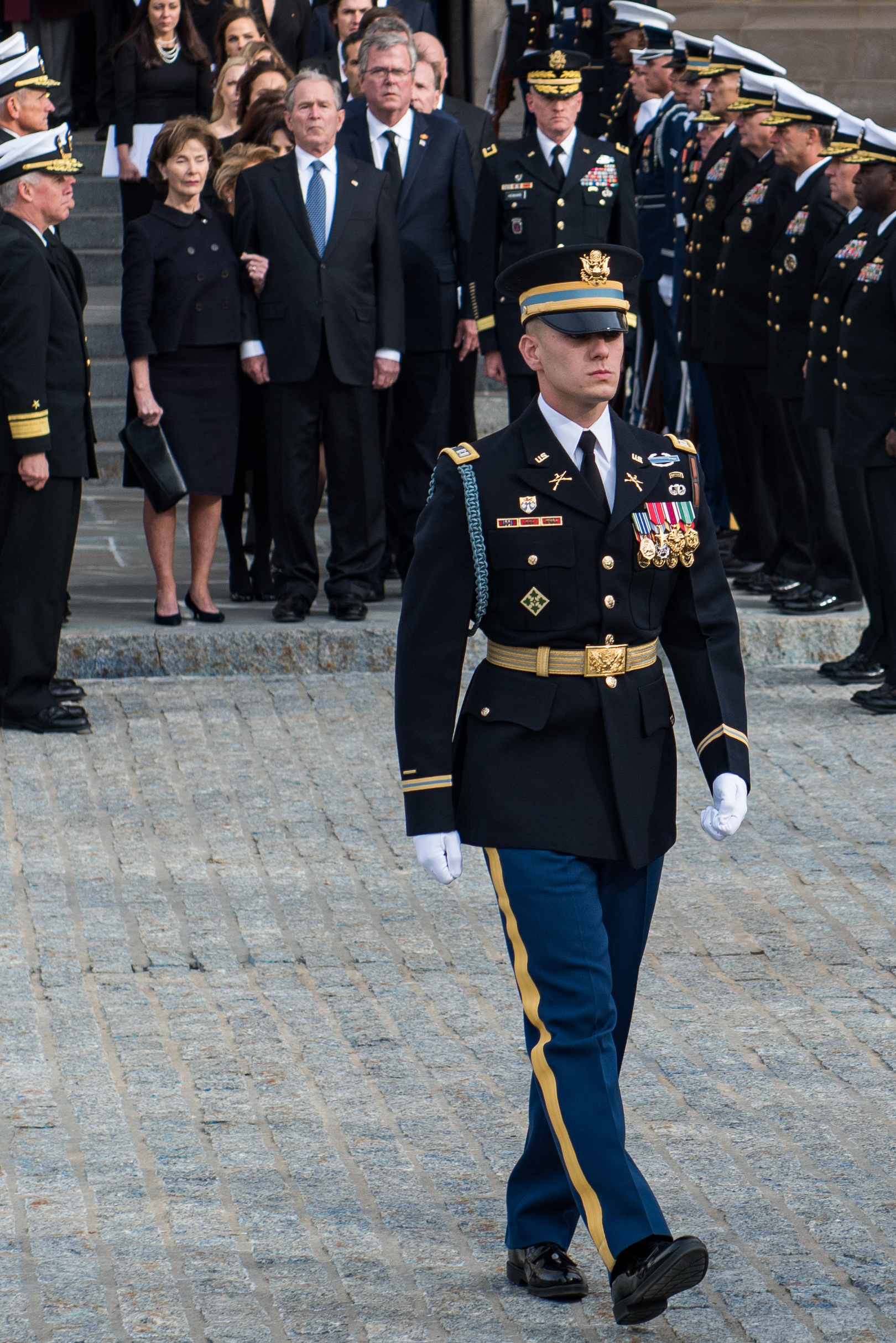
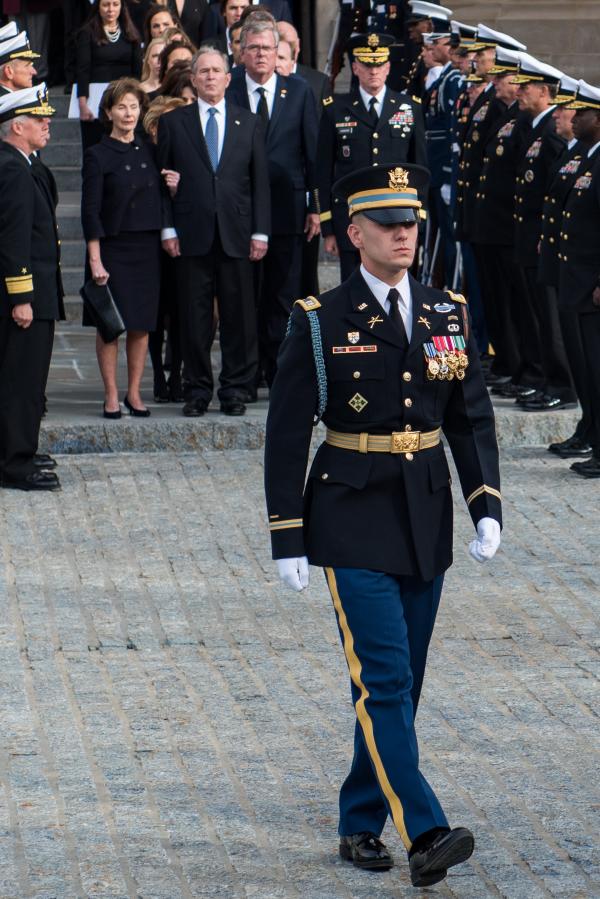
A member of the Old Guard marches in front of the Bush family at the funeral of former President George H.W. Bush.
When former President George H.W. Bush was laid to rest in December, he received a “state funeral,” an honor that typically goes to presidents, top military officials, and other individuals of national significance. If you watched the ceremony on television, you may have noticed several impeccably-dressed service members. They are part of “The Old Guard,” the 3rd Infantry Regiment of the United States Army.
I recently spoke with Colonel James J. Tuite IV, a regimental commander of The Old Guard. He explained that the regiment, which has been serving the U.S. since 1784, is the oldest active-duty infantry unit in the Army.
Since 1948, The Old Guard has been stationed in Washington, D.C. That’s when U.S. leaders determined that fallen comrades and military leaders should receive a ceremony befitting their service to the country. “We’re honored and privileged to be the unit that was picked so long ago,” Tuite said.
Often called the “escort to the President,” The Old Guard is now a largely ceremonial unit that is responsible for memorial events, including conducting military honors at state funerals. It also plays a key role in funerals for military officials and their families at Arlington National Cemetery in Virginia.
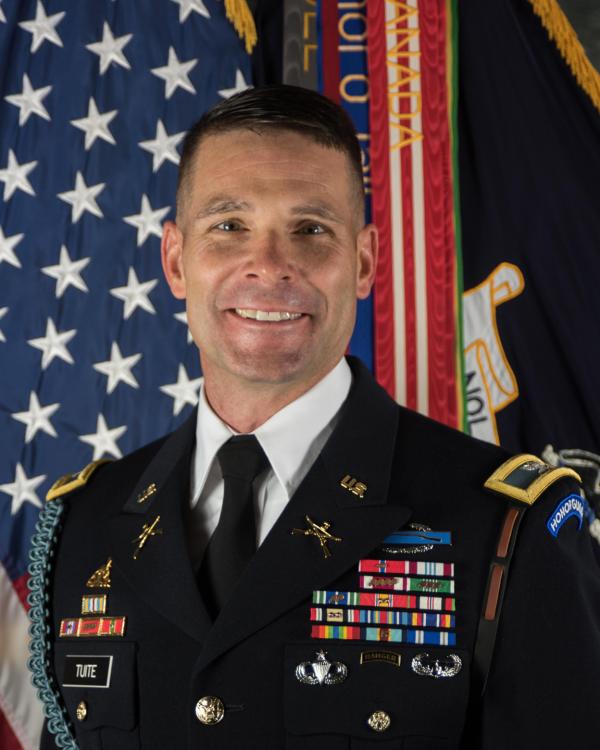
Colonel James J. Tuite, a regimental commander of The Old Guard
AN EMOTIONAL MOMENT
State funerals require tremendous planning. In fact, The Old Guard rehearses state funerals every 90 days in order to perfect their roles.
Major General Michael Howard was the Commanding General of The Old Guard and the other military units involved in President Bush’s funeral. There were also non-military components that had to be coordinated, including Congressional speakers, police infrastructure, and important family wishes. For example, President Bush’s family chose to forego a procession led by The Old Guard’s Caisson Platoon. That would have meant the casket was carried on a cart drawn by six strong horses.
In the past, Colonel Tuite served as the Officer in Charge at Arlington Cemetery. There, the memorial services are also highly-choreographed. After one particular salute, for example, seven service members fire three times, totaling 21 shots, followed by “Taps,” a military bugle call. The casket team then folds the flag and hands it to the Officer in Charge, who presents it to members of the family and expresses condolences.
In certain circumstances, The Old Guard hands the flag to a senior official, who then presents it to the family. General Howard received the flag from Captain Kevin Doherty of The Old Guard, and presented it to President Bush’s family.
Colonel Tuite reflected on the solemn ritual. “It’s a very intimate moment,” he said, recalling his service at Arlington. “I can remember the look in their eyes, the creases around their eyes, the look on their face. It’s a very emotional connection for a few moments. I can only imagine what it must have been like between General Howard and President Bush [George W. Bush, the 43th U.S. President and eldest son of George H.W. Bush].”
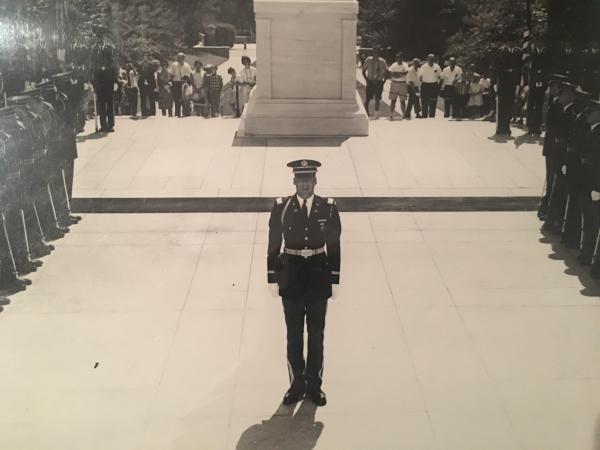
The author's grandfather, Paul Merrill Watson, served in The Old Guard in the 1960s. He is shown leading a ceremony at the Tomb of the Unknown Soldier in Washington, D.C.
THE TOMB OF THE UNKNOWN SOLDIER
Colonel Tuite’s experiences in the military, including three deployments overseas, have made him “a much more grateful individual,” he said, “for the freedoms we have.”
Americans are reminded of service members who fought to secure those freedoms at the Tomb of the Unknown Soldier in Washington, D.C. Since 1948, The Old Guard’s Tomb Guards, known as Sentinels, have kept watch over the tomb 24 hours a day, 365 days a year. The change occurs every hour during the winter and every half hour during the summer. Millions of visitors each year witness the precision and care taken during the Changing of the Guard ceremony.
One of the highlights of my grandfather’s life was serving in The Old Guard during the 1960s. Paul Merrill Watson was a First Lieutenant and First Platoon Leader in the Honor Guard Company. His company was responsible for ceremonies showcasing Army traditions and demonstrating respect for fallen soldiers.
After leaving The Old Guard to start a non-military career, my grandfather never forgot what those experiences taught him. The example he set continues to inspire me.
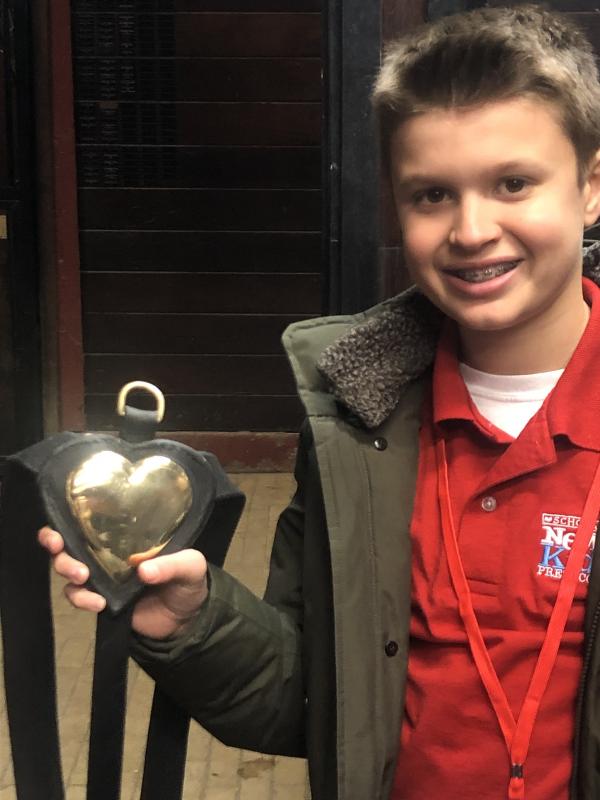
When the Caisson Platoon leads a funeral procession, its horses wear hearts on the chests (like the one Konrad is holding), to show respect and love for the service member’s family.
